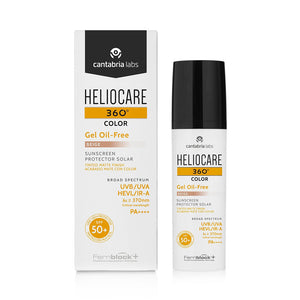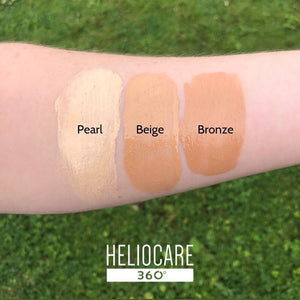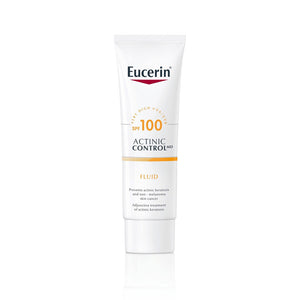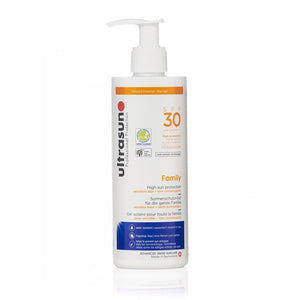What is Mole Mapping? How To Map Your Moles

Skin cancer is the most common cancer in the world, and with at least 100,000 new cases now diagnosed each year in the UK, it’s important to be aware and be vigilant. Learning how to protect your skin is vital in lowering your risk of developing skin cancer, but what’s also super important is learning how to spot the early signs of skin cancer using methods like mole mapping and the alphabet guide – in fact, these are lifesaving skills that we all should be aware of.
In more positive news, skin cancer is both the most preventable and, for most people, providing it’s caught early, most curable. However, skin cancer can spread to other parts of your body and may require treatment from teams other than dermatologists, including surgical specialists, radiation oncologists, and medical oncologists. Although skin cancer is not seen as the deadliest cancer to have, it’s important to realise that it’s still highly dangerous and should be taken extremely seriously.
How Does Melanoma Develop?
Over 80% of skin cancers are caused by overexposure to UV radiation from the sun, tanning lamps, and sunbeds. Smoking can also have an impact on your chances of developing skin cancer. Cancer begins when your healthy cells change and grow out of control to form a tumour. With skin cancer, the aggressor (usually UV rays) causes free radical damage to your cells which can alter your DNA and cause mutations, leading to the formation of the tumour.
These tumours can be benign (able to grow but not spread), or cancerous (able to grow and spread to other parts of your body). Some melanomas develop from your existing moles, and some can grow on what was previously healthy skin. So, keeping a track of your moles and to recognise any changes early is vital.
Who Is At Risk Of Developing Skin Cancer?
Anybody can get skin cancer, but there are a few factors that play a significant part in increasing your risk, so skin cancer awareness is vital. These include if you have:
- Red or blonde hair, and blue or green eyes
- A fair skin tone
- A history of sunburn
- Previous precancerous legions
- Excessive sun, sunbed, or tanning lamp exposure
- A family history of skin cancer
- A poor diet and an unhealthy lifestyle
- A history of or do smoke
- A weakened immune system
- Been exposed to radiation
- Lived in or currently live in a high altitude sunny climate
- Existing moles
- Photosensitivity

How Can You Lower Your Risk Of Developing Skin Cancer?
Keeping your skin protected from harmful UV rays is important in preventing skin cancer. You should wear sunscreen every day of the year as UV rays are ever present. Even on cloudy days, your skin is still subjected to around 50% of the UV rays from the sun.
It's also important to avoid excessive sun exposure. But if you are outdoors, or even sitting beside a window, wear clothing that covers your skin and make use of hats and sunglasses to protect your scalp, face, and eyes.
Alongside these practical measures, it's also best to adopt a healthy lifestyle along with a healthy diet.
Below are just some of our most popular sunscreens, as loved by our FTF customers and FTF HQ team.
For Daily Protection
Heliocare's 360 Colour Gel Oil Free SPF has long been a firm FTF customer and staff favourite. The coloured photoimmunoprotection enriched sunscreen has SPF 50 + protection, and works to protection your skin whilst helping to camouflage redness and imperfections, and evening out your skin tone and texture.
To Help Prevent Actinic Keratosis
Actinic Keratosis is a pre-cancerous skin disease which is, in part, caused by UV damage. This Eucerin's Actinic Control SPF 100 is a medical sunscreen that's ideal for all skin types. With very high protection across the entire UV spectrum, the SPF is ideal for everyday use.
For Sensitive Skin
Bioderma's Photoderm MAX Invisible Mist SPF 50+ is specially created to give UVA and UVB protection to sensitive skin. Giving eight hours of hydration to your skin, the formula is enriched with antioxidant vitamin E to help to protect your cells from oxidative stress.
For All The Family
If you're looking for a sunscreen for children that will suit the rest of the family, too, Ultrasun's Family SPF 30 is a great choice. The formula is lightweight and water-resistant, and is also non-irritating.
Especially For Your Face
COOLA's Classic Face Mist SPF50 is quick and easy to use thanks to its spray design. With naturally nourishing ingredients, like Buriti Oil, the formula nourishes your skin as it protects. Further enriched with an antioxidant rich Plant Protection® Complex, the formula also helps to protect your skin against free radical damage.
How Can You Spot Skin Cancer Early?
Mole mapping
Mole mapping is a fantastic way to keep a track of your moles. By keeping track of the moles on your body and re-assessing them every three months, you’re able to notice any changes quickly and make an appointment to see your healthcare provider. To do this, you can either use a specially created app on your phone or take photographs and measurements of your moles. You should re-check every few months at a minimum to look for any changes.
If you don’t feel confident in mapping your own moles, you can schedule an appointment with a healthcare professional where your body will be mapped using a specialist machine. High street retailers, like Boots, also offer certain mole mapping services, alongside private skincare clinics.
Unsure about the odd one or two moles? You can schedule an appointment with your GP who will happily assess your moles and help you to keep track - if you live in the UK, this is provided free by the NHS.
The Ugly Duckling Method
The Ugly Duckling Method is a recognition strategy that’s based around looking for the ‘odd one out’. It helps you to check for irregularities in your moles, and the surrounding moles. When using this method, you should be looking for skin lesions that are larger, smaller, darker, or lighter in comparison to your other moles. It’s also important to look for any isolated lesions that might be distanced from any surrounding moles, too.
The Alphabet Method For Skin Cancer Detection
The alphabet method is designed to help you to look for any irregularities or changes to your moles. Using this method will help you to keep track.
A is for asymmetry - most melanomas are symmetrical, meaning if you draw a line through the middle of the lesion, the two halves won't match. Common moles tend to be oval and have symmetry.
B is for border - normal moles have a smoother border, whereas melanomas tend to have jagged, scalloped, or notched edges.
C is for colour - normal moles tend to have a single, uniformed shade of brown. Look for any changes in the colour of your moles - from redness to whites, blues, or even very dark browns to black - anything that looks unusual to your other moles warrants a second look.
D is for diameter, or dark - most normal moles tend to be quite small, so keeping a close eye on lesions that are over 6mm (about the size of a pencil eraser) is important. It's also important to keep an eye out for any dark lesions and get them checked.
E is for evolving - if you notice any changes to the shape, size, colour, or even elevation of your moles, make sure you report it to your GP right away. Other signs to watch out for are bleeding, crusting, or itching.
Shop Bestselling Suncreens
Ready to read another post? Discover our brand new Barrier Repair Skin Edit that's been specially created to help you achieve and maintain a healthy skin barrier for your healthiest, most radiant skin. Find out all about the Barrier Repair Skin Edit: The Saviour Your Skin Has Been Waiting For here.





























